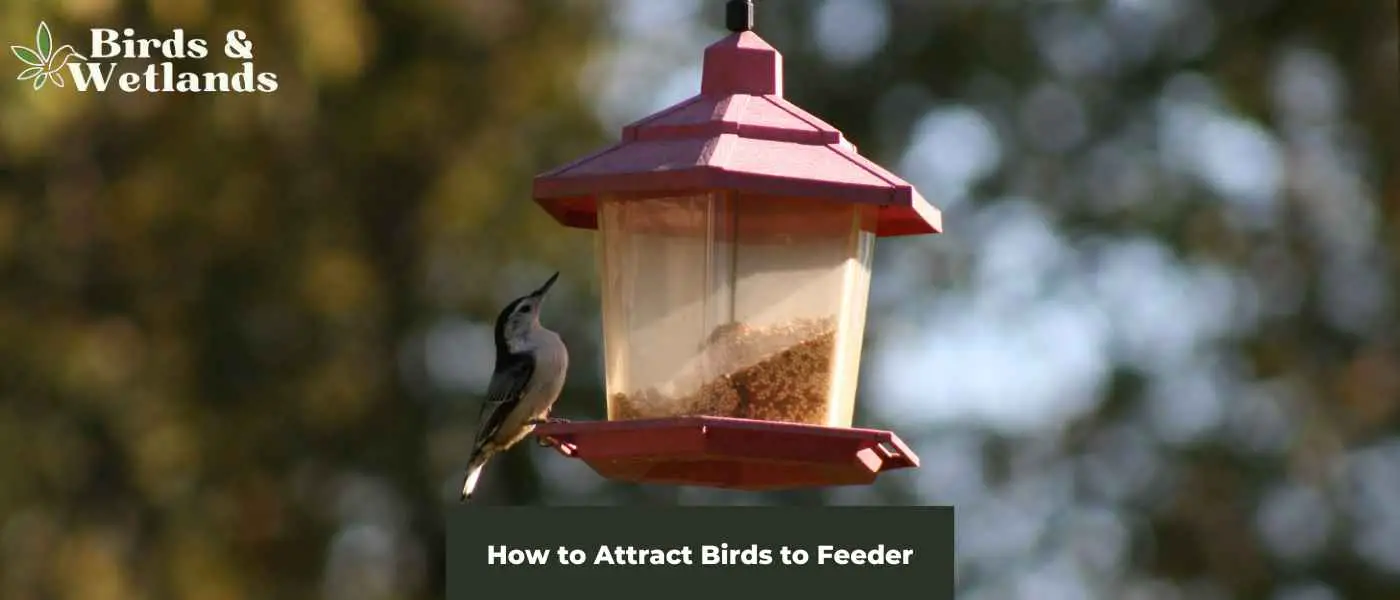To attract birds to a feeder, choose a quiet, safe location visible to birds and away from predators. Use diverse types of feed to cater to a variety of bird species. Sunflower seeds, suet, and nectar are popular choices. Maintain cleanliness to prevent disease spread. Lastly, provide a water source nearby, as birds are attracted to fresh water for drinking and bathing.
Key Takeaways On Attract Birds To Your Yard Using Bird Feeders
Things to Consider:
Attracting birds to a new feeder can take time and patience, but there are several strategies you can use to make your bird feeder more appealing. Here are some key things to consider:
Choose the Right Location
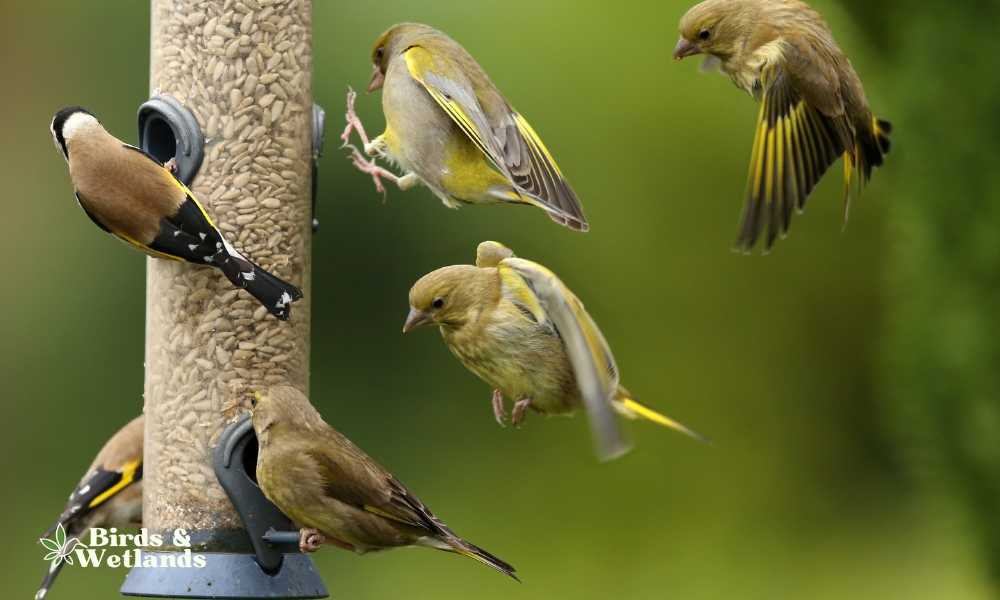
When choosing the right location for your bird feeder, there are a few things to keep in mind to ensure that the feeder is visible to birds and safe for them to use.
You should identify an open area in your backyard where birds can easily spot the feeder. It is essential to avoid placing the feeder in an area with too much shade or foliage that could make it difficult for birds to see the feeder.
Make sure that the feeder is visible from multiple angles so that birds can approach it from different directions. It is also important to place the feeder near a tree or shrub that birds can use for cover.
Birds need a place to perch and rest while they eat, so this is essential. This will also provide a natural source of shelter for birds when they are not using the feeder. The feeder should be within 10-15 feet of the tree or shrub so that birds can easily fly back and forth between the two.
Placing a feeder too close to a window can be dangerous for birds, as they can fly into the glass and injure themselves. To prevent bird collisions, you should keep the feeder at least 3 feet away from any windows. You can also use window decals or other bird-friendly markers on the glass to make it more visible to birds and reduce the risk of collisions.
Choose the Right Feeder
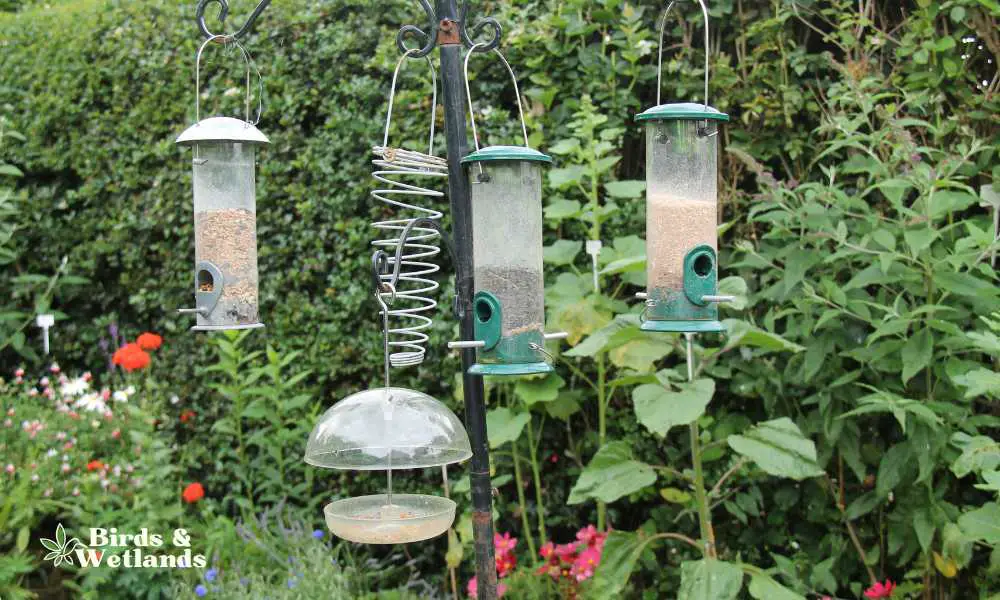
Choosing the right feeder is crucial to attracting more birds such as house sparrows and ground-feeding birds to your backyard. There are several factors to consider when selecting the right feeder.
You should choose a new bird feeder appropriate for the many bird species you want to attract or enjoy watching. Different birds have different feeding habits and preferences, so choosing a feeder that meets their needs is important to encourage birds to use your feeders.
For example, tube feeders for mixed seeds are ideal for small birds like finches, blue jays and other birds, while platform feeders are better suited for larger birds like doves and jays. Ground feeders are good for ground-feeding birds such as juncos and towhees. Similarly, nyjer or thistle feeders are ideal for nyjer seeds.
Hummingbirds require a hummingbird feeders or nectar feeders that provides nectar or sugar water.
You should ensure that the new feeder have bright colors and are is easy to clean and refill. Your feeders should be cleaned regularly to prevent the spread of disease among birds. Choose new feeders with a removable tray or parts easily disassembled for cleaning.
Make sure that the feeder is easy to refill, with an opening that is large enough to allow you to add food easily. Place rocks and small stones on your feeders to give a natural feel to it.
Choose a feeder with appropriate drainage to prevent water accumulation. If water collects in the feeder, it can cause the food to spoil and become a breeding ground for bacteria. Look for a feeder with drainage holes or a tray that is designed to allow water to drain away from the food.
Choose the Right Food
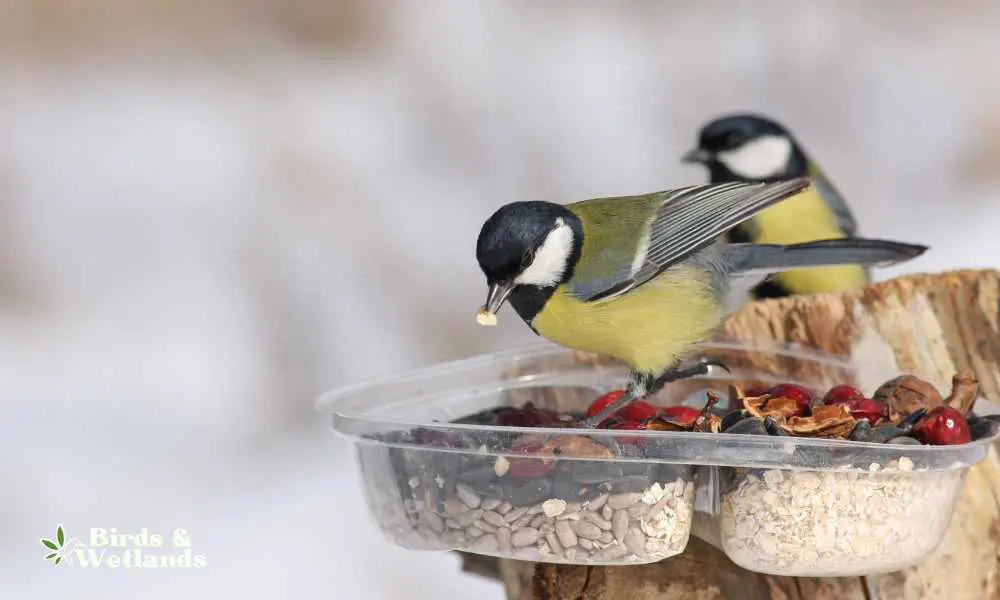
Here are a few things to consider when choosing the right food for your feeder.
You should offer a variety of bird foods such as bird seed mixes, cracked corn, suet, peanut pieces, white fruits. Many species of birds have different dietary needs, and offering a variety of food can help to attract a wider range of birds, especially during winter months.
For example, finches prefer nyjer seeds, while cardinals prefer black oil sunflower seeds. You can also offer suet cakes and white proso millet for woodpecker, insect-eating birds and fall migrants, nectar for hummingbirds, and fruits for orioles and tanagers.
It’s important to choose high-quality food to attract a variety of bird species. Look for food that is specifically formulated for the species you want to attract.
Avoid cheap, low-quality food, as it may contain fillers that are not healthy for birds. High-quality food is more nutritious and will attract several species of birds to your feeder.
Ensure that the bird food is fresh and free from mold and bacteria. Moldy bird food can be harmful to most birds and can cause them to become sick. Clean your bird feeder regularly, and remove any old or moldy food. Make sure that the food is stored in a dry, cool place to prevent spoilage.
Provide Birds Water
Attracting garden birds to your backyard or garden is a wonderful way to enjoy the beauty of nature. Providing water is one of the best ways to do this. Birds need water not just for drinking but also for preening and bathing, which helps keep their feathers in good condition. Here are some tips on using and providing water to attract birds to your outdoor space.
The first step in providing birds with water is choosing the right container. A bird bath is a classic option, but you can also use a shallow dish or a saucer. You can also provide them with a bath with moving water.
Just make sure the container is sturdy and won’t tip over, and that it has a rough surface to give birds something to grip onto. You can also add rocks or other natural elements to the container to make it more inviting to birds.
Just like humans, birds prefer clean water. Change the water in the container every couple of days to prevent the growth of algae and bacteria, and scrub the container with a brush to remove any debris or dirt.
Hugeneroy Heated Bird Bath
The Perfect Winter Helper
The hugeneroy Heated Bird Bath is a much-needed winter survival aid for our feathered friends, offering thermostatically controlled heat, durable construction, and energy-efficient operation.
- Winter-Friendly: Designed specifically for colder seasons, this bird bath maintains water just above freezing point, providing a constant source of liquid water for birds, even in heavy snowfall.
- Energy Efficient: With a built-in 120V 60W high-quality heating element, the birdbath heats up only when necessary, ensuring minimum energy consumption.
- Superior Material: Unlike ceramic or concrete alternatives that may crack under heat, this bird bath is made from quality, BPA-free plastic that withstands heating without generating harmful substances.
- Safety First: Featuring a thermostatically controlled operation, the bird bath automatically cuts off electricity when the water is dry, ensuring safety for the birds and other backyard animals.
- Attractive to Birds: The off-white bird bath blends in with the natural environment, attracting more birds to your backyard. It can also be adorned with colourful stones to make birds feel more secure and enhance your garden aesthetics.
Create a bird-friendly yard
Creating a bird-friendly wildlife habitat in your backyard or garden can be a wonderful way to attract these feathered friends to your outdoor space.
Provide natural shelter
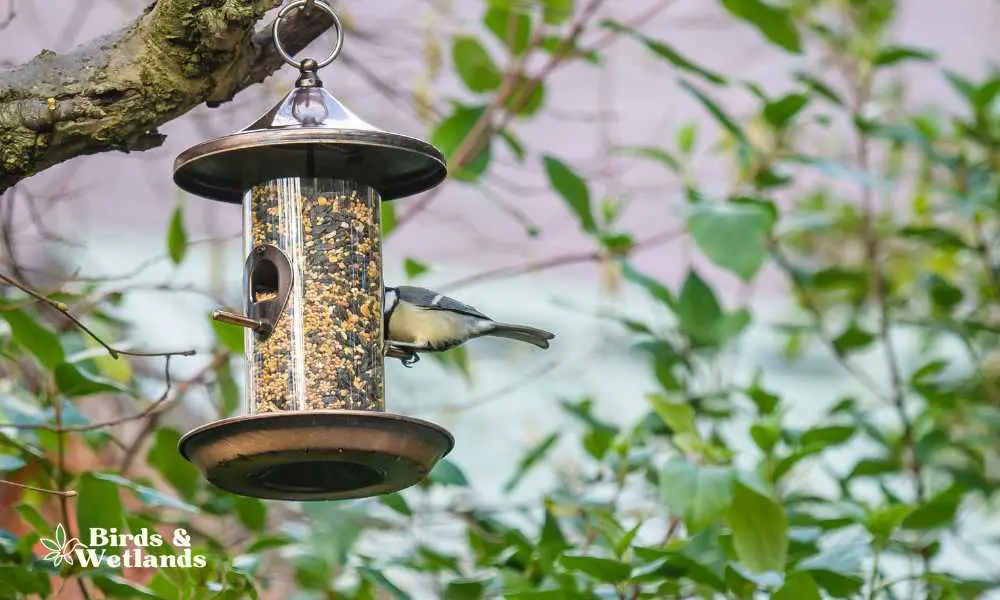
Birds need a safe place to rest and roost, so adding birdhouses, dense shrubs, nesting boxes or nesting materials, and other types of shelter can help attract a variety of bird species to your backyard. It is important to place these shelters in areas where they are protected from predators and other disturbances.
Plant native species
Planting native plants with tubular flowers in your backyard can help provide food and shelter for birds. Native plants are well-adapted to the local environment and can offer food sources and shelter for birds. They can also help attract insects, which are an important food source for many birds, so these plants can do double duty.
Avoid pesticides
Using pesticides in your garden or yard can be harmful to birds and other wildlife. It is best to avoid using pesticides and instead opt for natural methods of pest control.
Keep cats indoors
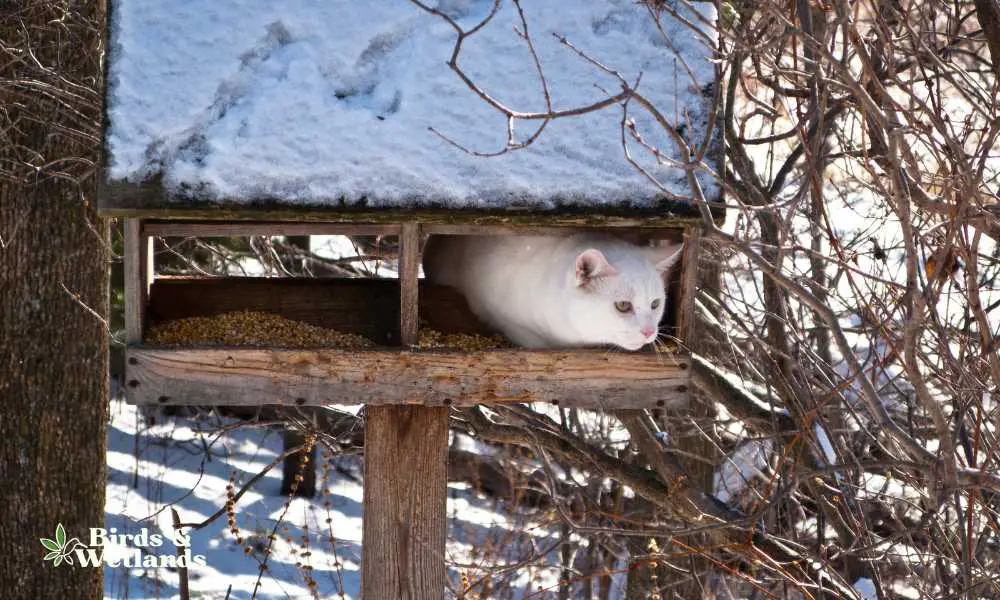
Cats are a major predator of birds, so it is important to keep them indoors or in a fenced area to help protect birds and other wildlife.

